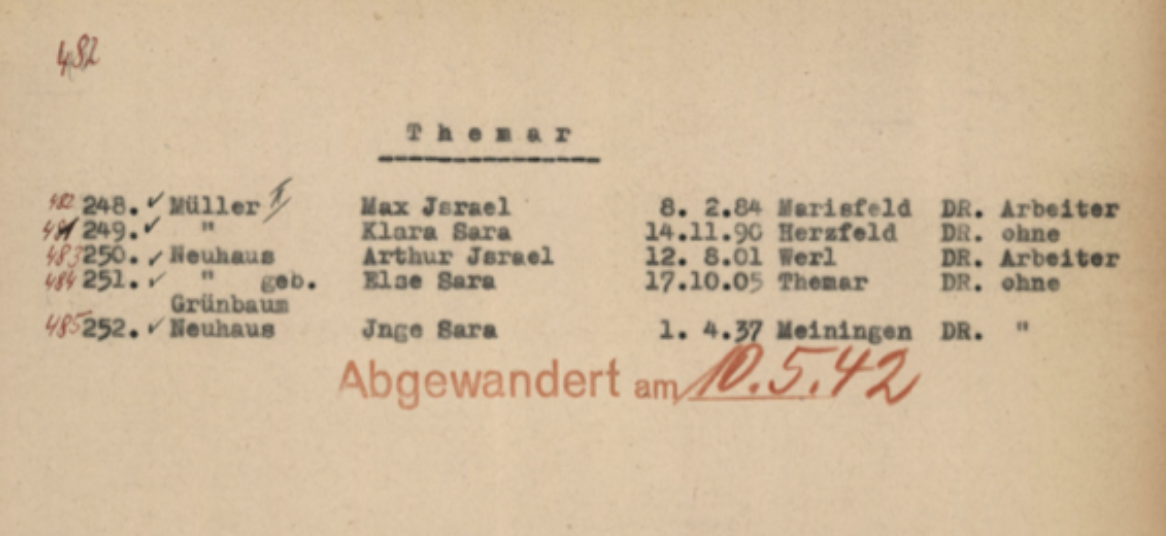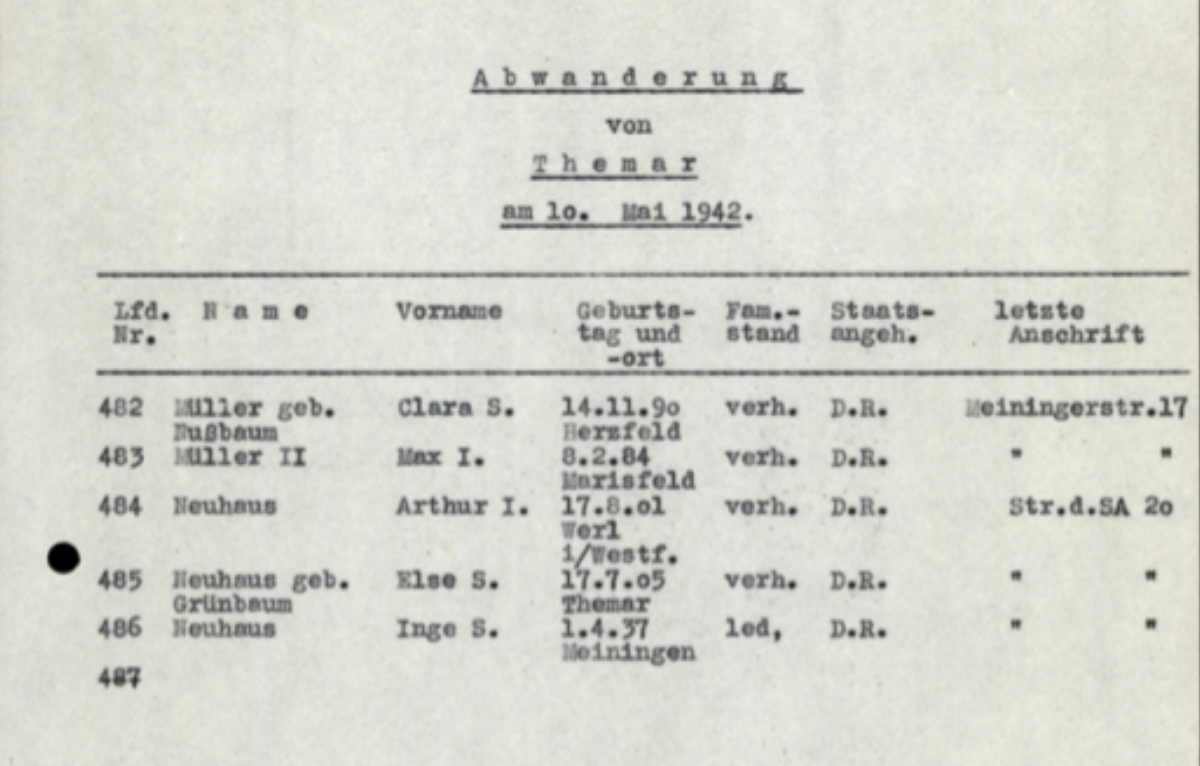What We Know:
Family Name: Müller
First Name: Max
Date/Place of Birth: 08 Feb 1884/Marisfeld, Sachsen-Meiningen
Marriage Year: 1912
Spouse: Clara Nussbaum
Children: Herbert, Meinhold, Willi
Years in Themar: 13 years. 1929-1942.
Address in Themar: Meininger Strasse 17
Date/Place/Destination of Deportation: 8 May 1942, deported to Belzyce Ghetto
Date/Place of Death: 10 October 1942 Majdanek KZ
Max Müller was the third child of Nathan and Bertha (née Schwed) Müller. He was born in in 1884, in Marisfeld, Sachsen-Meiningen, a small village of fewer than 500 people. The Jewish community of Marisfeld, which had numbered about 200 twenty years earlier, had shrunk to around 50 by the 1880s, a result of a disastrous fire that had burned many of the town’s buildings — Christian and Jewish — in 1866. Max’s parents, however, had chosen to stay in Marisfeld after the fire and continued to run their Manufacturwaren/textile business.
In 1912, Max married Clara Nussbaum of Bad Hersfeld, a town of over 11,000 citizens and a Jewish community of 325, some 90 km northwest of Marisfeld. Apparently, Max promised Clara that they would move from Marisfeld to a much larger centre but, with the outbreak of war and other circumstances, the move did not happen until 1929. In 1913, the first of their three sons, Herbert, was born. In 1914, Max went to war and came back, earning an Iron Cross for his bravery. Meinhold was born in 1919 and Willi in 1922.
In 1929, the Max Müller family moved to Themar. Max was 45 years of age, his sons were 16, 10, and 7. The family business, Max Müller Manufakturwaren, was managed from the house at Meininger Strasse 17. Since his cousin, Max Müller, the son of Mayer Müller, had been born (1873) and raised in Themar, the former became known as Max Müller I and Max, the son of Nathan, became known as Max Müller II. This distinction became formalized in the city records and even today, seventy years later, those who remember the Jewish community remember the two men as Max Müller I and Max Müller II.
Max Müller was 49 years old when Hitler came to power. Like many other Germans, both Christians and Jews, he may have initially expected the Nazi regime to be a temporary aberration. Like many other German Jews, Max probably found it difficult to imagine the extreme outcome of Nazi persecution of Jews. Through the first half of the 1930s, he hoped that his status as a WWI veteran would protect him. Yet growing anxiety about the future prompted the family to find emigration routes for the younger sons: both Meinhold and Willi were able to leave Germany before Kristallnacht, Meinhold in 1936 first for Italy and subsequently for Sweden, and Willi in 1938, just before Kristallnacht, for Palestine. Still in Germany at Kristallnacht, Herbert, who had married in August 1938, and his parents faced the rapidly increasing difficulties of finding refuge in another country.
Relatives did their utmost to get the Müllers out of Germany. Letters from Clara and Max to their sons Meinhold and Willi between December 1938 and 1941 detail the efforts of Max’s cousin, Herbert Sweed in California, and others to sponsor their immigration into the United States. But their numbers were too high — Clara wrote to Willi in 1939, before the outbreak of war, that they would probably have to wait two years before they could hope to be within the American quota allowance. But time ran out: in October 1941 all immigration from Germany was halted and Clara and Max had still not reached the top of the list. The deportations of the German Jews began and, on May 8, 1942, Max and Clara were taken by train from Themar to Weimar where they were deported further to Belzyce Ghetto in Occupied Poland.
According to research done by Jörg Kaps of Arnstadt, Max Müller II was taken from Belzyce Ghetto to Majdanek KZ where he was murdered on 10 October 1942. The date of Clara’s death remains unknown.


